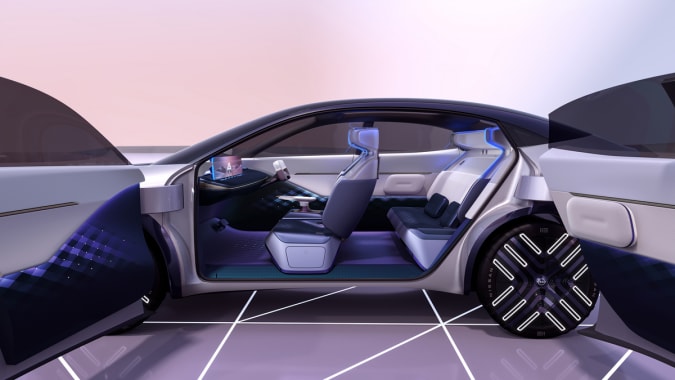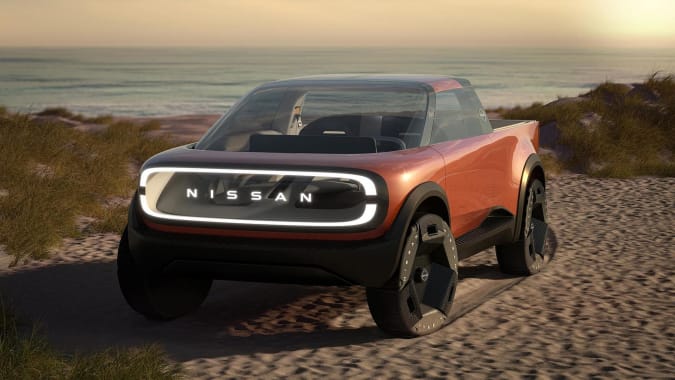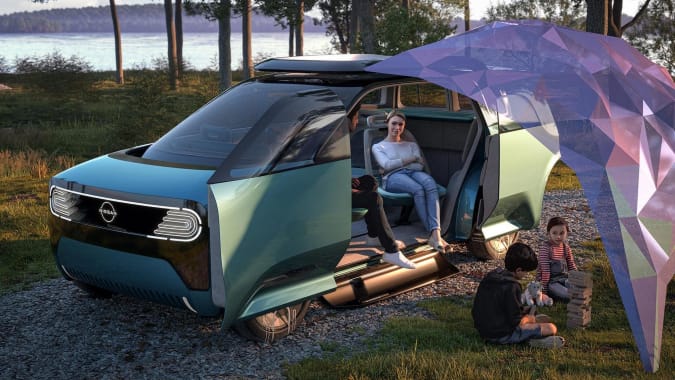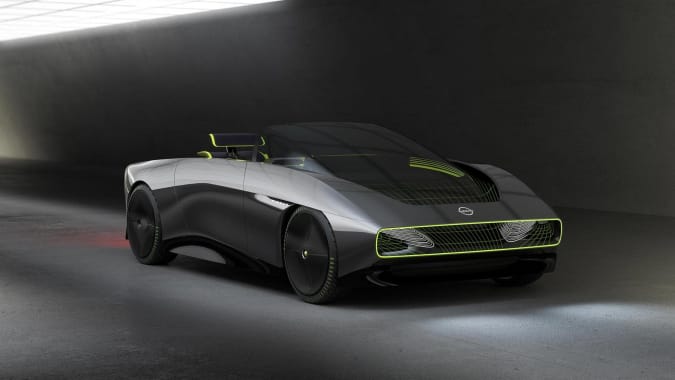Nissan will invest 2 trillion yen ($17.6 billion) over the next five years developing new EVs and battery technology as part of a grand plan it calls “Ambition 2030,” the company announced. It aims to release 15 new EVs total by 2030, with electrified vehicles making up half its vehicle lineup at that point.
The automaker said it will develop 23 electrified vehicles in total over the next eight years, with 20 of those coming in the next five years alone. It’s shooting for a market mix of 75 percent electrified (EV and e-Power PHEV/hybrids) in Europe, 55 percent in Japan and 40 percent in the US and China by 2030.
The other part of that mix, would presumably be internal combustion engine (ICE) vehicles. It’s worth noting that in early 2021, Nissan said that it planned to electrify every all-new car it launches by the early 2030s. Presumably, then, any ICE vehicles still available would be legacy models.
Nissan will launch EVs with all-solid-state batteries (ASSB) by 2028 and ready a pilot plant in Yokohama as early as 2024, it said. That technology promises benefits like reduced charging times, but has yet to arrive to market as expected. The company also wants to bring the cost of battery packs down to $75 per kWh by 2028 with a reduction to $65 kWh further down the road. That would be about half of what EV batteries cost last year, according to Bloomberg. By 2030, Nissan hopes to be producing 130 GWh of batteries.
The company said it plans to expand its ProPilot driver assistance technology to over 2.5 million Nissan and Infiniti vehicles by 2026. It will also incorporate next-generation LIDAR systems “on virtually every new model by fiscal year 2030.”

As part of Ambition 2030, Nissan also unveiled no less than four concept cars: the Chill-Out, Surf-Out, Hang-Out and Max-Out. Like most concepts, they’re meant to give a taste of Nissan’s future technology including self-driving, interior features and just far-out designs. However, Nissan has only shown images of the Chill-Out as a real vehicle, with renders of the other three vehicles.
The Chill-Out (top and above) is a smallish crossover that could be an early preview of the next-generation Leaf, which Nissan previously confirmed would move from a hatch to a crossover style body. It will use the Ariya’s CMF-EV platform and e-4orce electric all-wheel drive system, and could arrive by 2025.

The Surf-Out, meanwhile, is a small electric single cab pickup with a decent-sized bed and removable canopy. It would come with a dual-motor AWD setup and a variety of power outputs, offering off-road performance, utility power and extended cargo space.

Then there’s the Hang-Out, which is more like a small camper van/SUV designed to “provide a new way of spending time on the move.” It has a completely flat floor and movable, theater-like seats, offering “the comfort of your living room in a mobile space” — something we’ve seen with other recent EV concepts. It also offers e-4orce and advanced ProPilot features.

Finally, the Max-Out is a concept convertible sports car that offers “superlative stability and comfort.” Body roll is limited to deliver “dynamic cornering and steering response” to optimize handling and occupant comfort. It’s supposedly lightweight with a very low center of gravity, and also offers advanced e-4orce.
Nissan’s new plan comes as the company has grappled with internal problems, including the arrest and subsequent flight of former CEO Carlos Ghosn. In the short term, the company plans to cut 300 billion yen ($2.65 billion) in fixed costs and reduce production capacity by 20 percent as part of its “Nissan Next” plan unveiled last year.
Editor’s note: This article originally appeared on Engadget.

